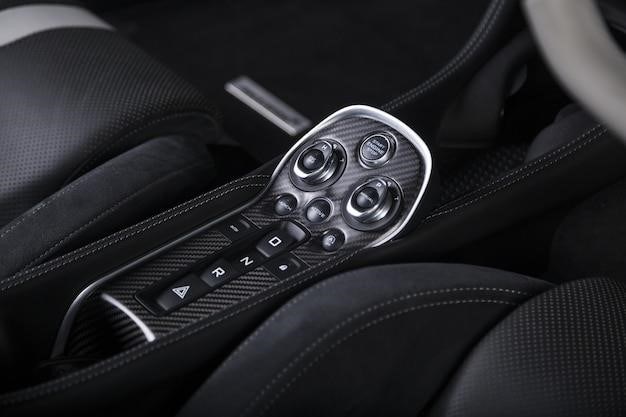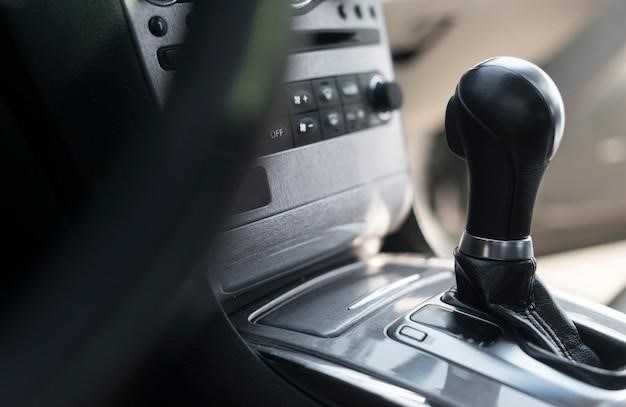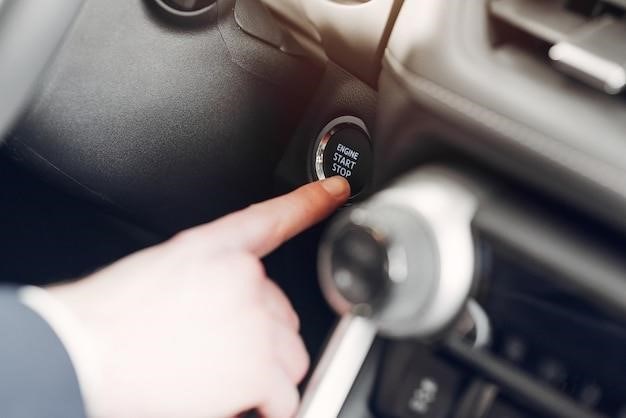Front-Wheel Drive Manual Transmission⁚ A Comprehensive Guide
This comprehensive guide will delve into the world of front-wheel drive (FWD) manual transmissions, exploring their unique characteristics, advantages, disadvantages, and the cars that embody this exciting driving experience. We’ll cover everything from the components that make up these transmissions to the intricacies of driving them, as well as the future of this technology. Join us as we unravel the fascinating world of FWD manual transmissions.
Introduction
In the ever-evolving landscape of automotive technology, the allure of a manual transmission remains a cherished sentiment for driving enthusiasts. The visceral connection, the tactile engagement, and the sheer joy of shifting gears are experiences that resonate deeply with those who appreciate the art of driving. While the dominance of automatic transmissions has surged in recent years, a dedicated community of drivers continues to champion the virtues of manual gearboxes, especially in the realm of front-wheel drive (FWD) vehicles.
This comprehensive guide will delve into the fascinating world of FWD manual transmissions, exploring their unique characteristics, advantages, disadvantages, and the cars that embody this exciting driving experience. We’ll journey through the intricacies of their components, the nuances of driving them, and the evolving landscape of this technology. Join us as we uncover the captivating story of FWD manual transmissions, a testament to the enduring appeal of a classic driving experience.
What is a FWD Manual Transmission?
A front-wheel drive (FWD) manual transmission, often referred to as a “stick shift” or “manual gearbox,” is a type of transmission system found in vehicles where the engine’s power is directed to the front wheels. Unlike automatic transmissions, which shift gears automatically, a manual transmission requires the driver to manually select the appropriate gear using a gear lever and clutch pedal. This direct engagement with the drivetrain offers a more involved and engaging driving experience.
In FWD vehicles, the transmission and differential are typically integrated into a single unit known as a “transaxle.” This compact design saves space and weight, making it a popular choice for smaller and more fuel-efficient cars. The transaxle houses the gears that allow for different speed ratios, enabling the driver to select the optimal gear for various driving conditions. The differential, responsible for distributing power to the front wheels, is also incorporated within the transaxle. This integrated design simplifies the drivetrain layout and optimizes power delivery to the front wheels.
Components of a FWD Manual Transmission
A FWD manual transmission, or transaxle, is a complex assembly consisting of several key components that work together to transfer power from the engine to the front wheels. Here’s a breakdown of the essential elements⁚
- Clutch⁚ The clutch is a vital component that connects and disconnects the engine from the transmission. When the clutch pedal is depressed, it disengages the engine from the transmission, allowing the driver to shift gears smoothly; When the clutch pedal is released, the clutch engages, transferring power to the transmission.
- Gearbox⁚ The gearbox contains a set of gears of different sizes that allow the driver to select different speed ratios. Shifting gears allows the driver to adjust the engine’s speed and torque output to match the driving conditions, providing optimal acceleration, fuel efficiency, and engine braking.
- Synchronizers⁚ Synchronizers help ensure smooth gear changes by matching the speeds of the input and output shafts before engaging the gear. They prevent grinding and damage to the transmission.
- Differential⁚ The differential is responsible for distributing power to the front wheels. It allows the wheels to rotate at different speeds when cornering, ensuring that the vehicle maintains traction and stability.
- Drive Axles⁚ The drive axles connect the differential to the front wheels, transmitting power from the transaxle to the wheels.
These components work in unison to ensure efficient and reliable power transmission from the engine to the front wheels, providing the driver with control and responsiveness.
Advantages of FWD Manual Transmissions
FWD manual transmissions offer a unique blend of advantages that appeal to drivers seeking a more engaging and efficient driving experience. Here are some of the key benefits⁚
- Enhanced Driver Control⁚ Manual transmissions allow drivers to have complete control over gear selection, providing a more direct connection to the vehicle’s performance. This control translates into a more engaging and rewarding driving experience, especially for those who appreciate the art of shifting gears.
- Improved Fuel Efficiency⁚ By carefully selecting gears, drivers can optimize engine speed and torque, resulting in better fuel economy compared to automatic transmissions. This is particularly noticeable in urban driving conditions, where frequent acceleration and deceleration are common.
- Increased Performance⁚ While FWD manual transmissions are not always associated with high-performance cars, they can offer advantages when paired with a well-tuned engine. By enabling the driver to select the optimal gear for specific situations, manual transmissions allow for more precise control over power delivery, resulting in quicker acceleration and better handling.
- Lower Cost⁚ Manual transmissions are typically less expensive to manufacture than automatic transmissions, which can translate into a lower purchase price for vehicles equipped with them. Additionally, manual transmissions are generally simpler in design and require less maintenance, leading to lower repair costs over the long term.
These advantages make FWD manual transmissions a compelling choice for drivers seeking a more engaging, fuel-efficient, and potentially more affordable driving experience.

Disadvantages of FWD Manual Transmissions
While FWD manual transmissions offer several advantages, they also come with certain drawbacks that some drivers may find less appealing. Here are some of the key disadvantages⁚
- Learning Curve⁚ Driving a manual transmission requires learning a new skill set, including coordinating the clutch, shifter, and throttle. This can be challenging for novice drivers, especially in traffic or on steep inclines.
- Increased Driver Fatigue⁚ In stop-and-go traffic or during long drives, constantly shifting gears can lead to increased driver fatigue, especially compared to the convenience of an automatic transmission.
- Limited Availability⁚ As manual transmissions become less popular, they are becoming increasingly difficult to find in new cars. This can limit choices for drivers who prefer this type of transmission.
- Potential for Damage⁚ If not properly maintained, manual transmissions can be prone to wear and tear, potentially leading to costly repairs. This is particularly true for drivers who frequently drive in harsh conditions or who engage in aggressive driving styles.
These disadvantages are important considerations for drivers who are deciding whether a FWD manual transmission is the right choice for them; While they offer a unique driving experience, the learning curve, potential for fatigue, limited availability, and potential for damage may outweigh the benefits for some drivers.
Popular FWD Manual Transmission Cars
Despite the declining popularity of manual transmissions, there are still several popular FWD cars that offer the engaging driving experience that enthusiasts crave. These models have garnered acclaim for their performance, handling, and the pure joy of shifting gears.
- Honda Civic Si⁚ The Civic Si has long been a favorite among manual transmission enthusiasts, offering a well-balanced combination of performance, handling, and affordability. Its 1.5-liter turbocharged four-cylinder engine delivers ample power, while its precise steering and responsive chassis make it a joy to drive on winding roads.
- Acura Integra⁚ Sharing its platform with the Civic Si, the Acura Integra offers a more premium experience, with a sophisticated interior and a refined driving experience. The A-Spec trim level adds sporty styling and a six-speed manual transmission, making it a tempting option for those seeking a sporty and luxurious FWD manual car.
- Mini Cooper⁚ The Mini Cooper has become an icon of fun-to-drive FWD cars, known for its go-kart-like handling and engaging character. With its spirited engine options and precise steering, the Mini Cooper offers a unique driving experience that is both exhilarating and satisfying.
- Mazda3⁚ The Mazda3 has consistently impressed reviewers with its sharp handling, responsive engine, and refined interior. The manual transmission option adds an extra layer of engagement, making the Mazda3 a well-rounded and enjoyable car to drive.
These are just a few examples of popular FWD manual transmission cars. While the number of new models offering this option is shrinking, there are still plenty of exciting choices available for drivers who appreciate the tactile and engaging experience of a manual transmission.
How to Drive a FWD Manual Transmission
Driving a FWD manual transmission car is a rewarding experience that requires a bit of practice and coordination. The key is understanding the interaction between the clutch, gear shifter, and throttle to achieve smooth and efficient gear changes.
- Start the engine and engage the clutch⁚ With the engine running, press down on the clutch pedal fully. This disengages the transmission from the engine, allowing you to shift gears without resistance.
- Select first gear⁚ While holding the clutch pedal down, shift the gear lever into first gear. This engages the first gear set within the transmission.
- Slowly release the clutch⁚ As you release the clutch pedal, the engine torque will begin to transfer to the wheels. The key is to release the clutch gradually, feeling for the “bite point” where the engine begins to pull the car forward. If you release the clutch too quickly, the car may lurch forward abruptly.
- Accelerate and shift⁚ Once the car is moving, you can accelerate by pressing the gas pedal. To shift to the next gear, press the clutch pedal down again, shift the gear lever into the next gear, and release the clutch smoothly. As you gain speed, you will need to shift through the gears, from first to second, second to third, and so on.
- Downshifting⁚ When slowing down, you will need to downshift. This is done by pressing the clutch, shifting to the lower gear, and then releasing the clutch. It is important to match the engine speed to the vehicle speed when downshifting to avoid jerking or stalling the engine. This is done by releasing the clutch pedal while simultaneously pressing the gas pedal to increase engine speed.
With practice, you will learn to coordinate the clutch, gear shifter, and throttle seamlessly, achieving smooth and efficient gear changes. Driving a manual transmission car offers a more engaging and rewarding experience, allowing you to feel a direct connection to the car’s power and performance.
Maintenance and Repair of FWD Manual Transmissions
Like any mechanical system, FWD manual transmissions require regular maintenance to ensure optimal performance and longevity. Proper maintenance includes regular fluid changes, inspections, and addressing any issues promptly. Neglecting these tasks can lead to premature wear and tear, potentially resulting in costly repairs.
Here’s a breakdown of essential maintenance and repair considerations for FWD manual transmissions⁚
- Fluid Change⁚ The transmission fluid is crucial for lubrication and cooling. Consult your owner’s manual for recommended fluid change intervals, typically every 30,000 to 60,000 miles. Using the correct type of fluid is essential, as improper fluid can damage the transmission.
- Clutch Inspection⁚ The clutch plays a vital role in engaging and disengaging the transmission. Inspect the clutch for signs of wear, such as slipping or excessive noise. Clutch replacement is usually necessary every 70,000 to 100,000 miles, depending on driving habits.
- Gearbox Inspection⁚ Regularly inspect the gearbox for leaks, unusual noises, and shifting problems. Any issues should be addressed promptly to prevent further damage.
- Differential Inspection⁚ The differential distributes power to the wheels. Check for leaks, noises, and any signs of wear. Regular differential fluid changes are recommended.
- Drive Axles⁚ Inspect the drive axles for wear, cracks, or leaks. Replace damaged axles to prevent drivetrain failure.
While some minor repairs can be performed by experienced DIY enthusiasts, complex issues involving the gearbox or differential are best left to qualified mechanics. Regular maintenance and addressing issues promptly will help extend the life of your FWD manual transmission, ensuring a smooth and enjoyable driving experience for years to come.
The Future of FWD Manual Transmissions
While the popularity of manual transmissions has dwindled in recent years, the future of FWD manual transmissions remains somewhat uncertain. The shift towards automated transmissions like dual-clutch automatics and continuously variable transmissions (CVTs) has been driven by factors such as fuel efficiency, convenience, and performance.
However, there are reasons to believe that FWD manual transmissions will continue to have a niche following, particularly among enthusiasts who appreciate the engaging driving experience they offer. The tactile connection between driver and car, the precise control over gear changes, and the inherent sense of involvement are qualities that many drivers find deeply satisfying.
The future of FWD manual transmissions may also be influenced by advancements in technology. Hybrid and electric vehicles are becoming increasingly popular, and the development of manual transmissions compatible with these powertrains could revitalize the segment. Additionally, the growing interest in motorsport and performance driving could spur innovation in FWD manual transmissions, leading to more robust and engaging options for enthusiasts.
Ultimately, the future of FWD manual transmissions will depend on consumer demand and the evolving landscape of the automotive industry. While they may not be as prevalent as they once were, their unique appeal and potential for future development suggest that they will continue to have a place in the automotive world for those who value a truly engaging driving experience.
The front-wheel drive manual transmission, once a staple of the automotive landscape, has faced a significant decline in popularity due to advancements in technology and shifting consumer preferences. While it may not be as ubiquitous as it once was, it still holds a special place in the hearts of many drivers who value the engaging and rewarding experience it offers.

FWD manual transmissions provide a direct connection between the driver and the car, allowing for precise control over gear changes and a more involved driving experience. They also offer advantages in terms of fuel efficiency and affordability compared to their rear-wheel drive counterparts. However, the limitations of FWD manual transmissions, such as potential for torque steer and less optimal weight distribution, have contributed to their decline in popularity.
Despite the challenges, the future of FWD manual transmissions remains somewhat hopeful. The development of manual transmissions compatible with hybrid and electric powertrains could revitalize the segment, and the growing interest in performance driving could lead to more advanced and engaging options for enthusiasts. Whether the FWD manual transmission enjoys a resurgence or remains a niche choice for those who appreciate its unique qualities, it will continue to hold a special place in automotive history for its contribution to the driving experience.
Resources
For those eager to delve deeper into the world of FWD manual transmissions, a wealth of resources is available online and in print. Several websites dedicated to automotive enthusiasts offer insightful discussions, technical guides, and reviews of FWD manual transmission cars.
For instance, Car and Driver, a renowned automotive publication, provides comprehensive reviews and analysis of various vehicles, including those featuring FWD manual transmissions. Websites like iSeeCars.com offer detailed information on horsepower ratings, vehicle comparisons, and rankings of FWD manual transmission cars, enabling informed decision-making for potential buyers.
Beyond online resources, numerous books and publications explore the history, technology, and driving dynamics of manual transmissions. Libraries and bookstores offer a diverse selection of materials, ranging from technical manuals for mechanics to historical accounts of the evolution of manual transmissions.
Furthermore, engaging with online communities dedicated to specific car models or FWD manual transmissions can provide valuable insights, troubleshooting advice, and a sense of camaraderie among enthusiasts. These online forums serve as a platform for sharing knowledge, experiences, and passion for FWD manual transmissions, enriching the overall experience.

Leave a Reply